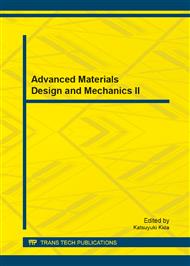p.223
p.227
p.231
p.235
p.239
p.243
p.247
p.253
p.261
Properties of HPC with Fly Ash, Blast Furnace Slag and Silica Fume
Abstract:
This paper addresses the results of an extensive experimental study on the compressive, splitting tensile strength modulus of elasticity in long-term. These tests were carried out to investigate the mechanical properties of HPC for 56 and 91days. In this work, High performance concrete was designed a water-binder ratio of 0.40. In addition, three different concrete mixes were used in these specimens. The results properties of HPC with fly Ash, blast furnace slag and silica fume were effective for compressive strength splitting tensile strength and modulus of elasticity improvement between 56 to 91 curing days.
Info:
Periodical:
Pages:
239-242
Citation:
Online since:
August 2013
Authors:
Price:
Сopyright:
© 2013 Trans Tech Publications Ltd. All Rights Reserved
Share:
Citation:


